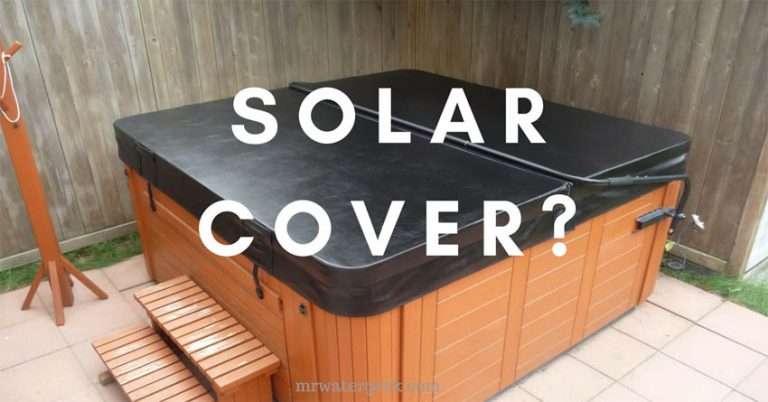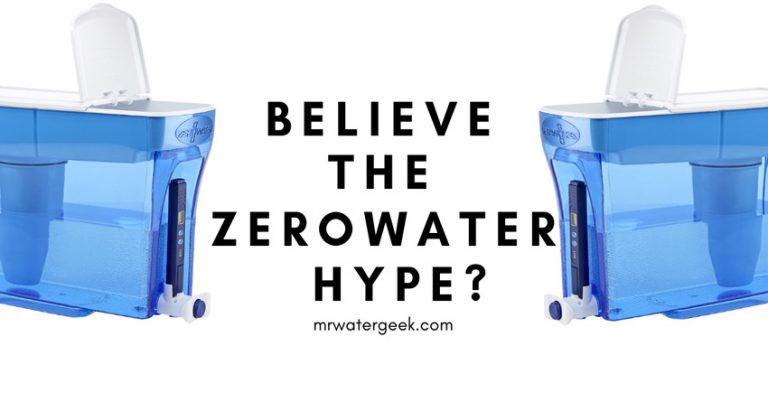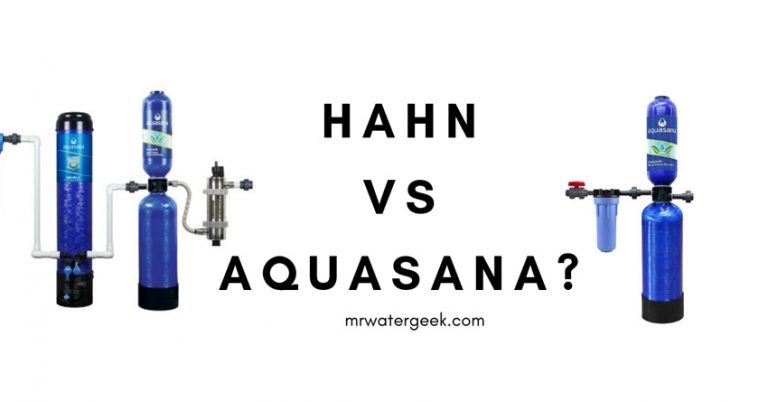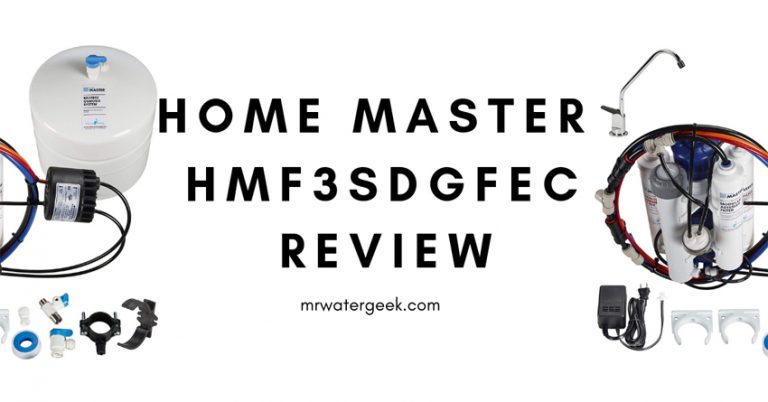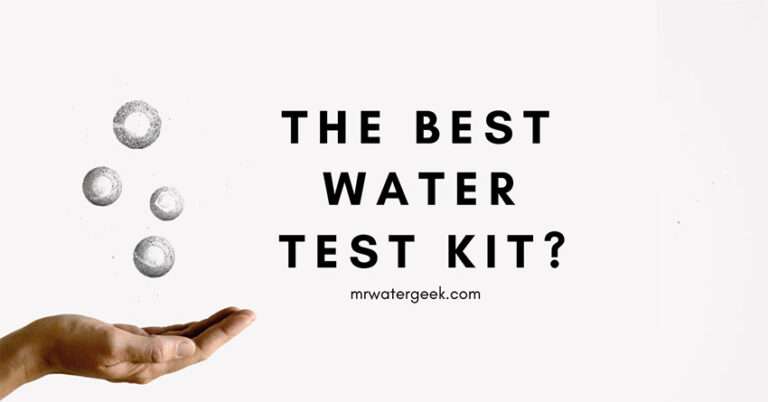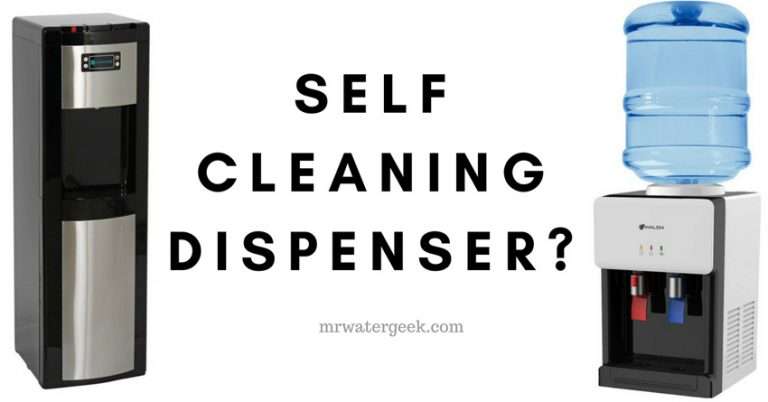Aquasana Rhino vs Softpro: My HONEST Comparison
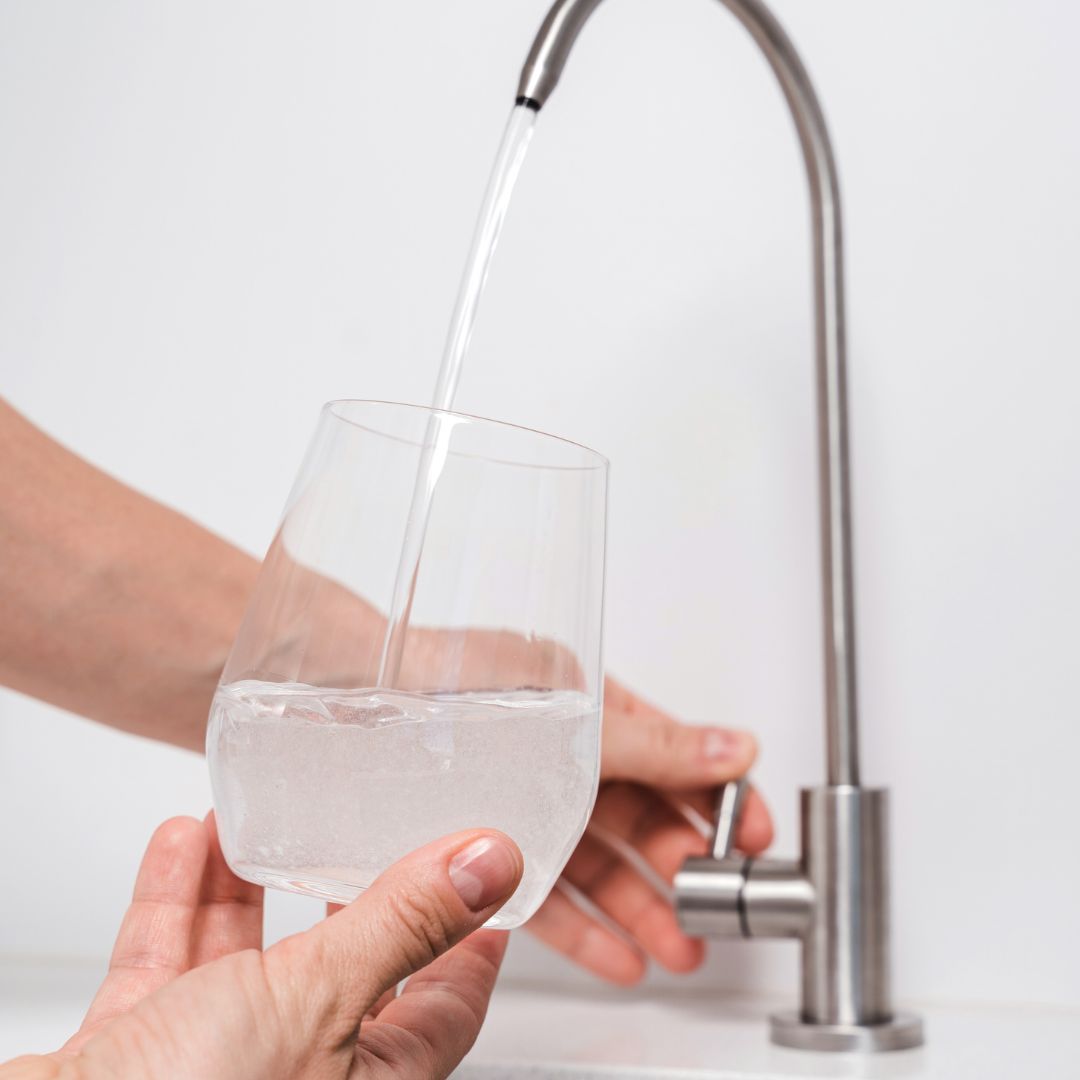
Our drinking water sources face increasingly complex contamination issues. Both city water supplies and private wells can contain an alarming mix of pathogens, chemicals and other pollutants problematic to health in the long-term if consumed untreated. It has therefore become vital, in some cases, for households to implement extra protection through advanced at-home water filters to ensure access to pure, clean water.
In this post, I aim to provide an informed comparison between two whole-house water treatment giants; Aquasana and Softpro. As a leading resource for residential filtration choices, it is my goal to thoroughly assess these brands’ respective offerings. By analyzing each system’s core technologies, features and performance credentials, my objective is empowering homeowner selection of the best long-term partner for their drinking water needs.
I’ll start at the end by listing the key characteristics of the softeners you should be considering and a summary of how the two brands compare. I’ll dive into the details after and conclude with the same info. So if something doesn’t make sense in the section below, scroll down and it’ll likely be explained. If it isn’t and/or you’re confused about something, please submit a comment below with your question for the benefit of other readers who may have the same question instead of sending me an email/LinkedIn message.

Key Considerations
Water Quality Report
If you get your water treated by you local municipality, starting with your municipal water quality report is key. It will indicate things like hardness levels, pH, and any concerning contaminants to target. Brand specialties then come into play. I do recommend homeowners on well water to get their water tested.
Budget
Upfront costs vary between brands and specific models. Factor in any additional maintenance/consumable costs too like salt for Softpro units. Long-term savings from protecting pipes and appliances are universal though.
Salt-free Conditioning vs Salt-Based Softening
I prefer salt-based softeners over salt-free conditioners, which don’t technically ‘soften’ water. I have tested both technologies side-by-side (ion-exchange vs template assisted crystallization or TAC) and I am not a fan of the salt-free tech as they’re dependent on processing already clean water and not as effective. They do work when everything is set up correctly (spoiler: Aquasana actually does a great job with their implementation of TAC tech).
Needs Beyond Hardness
If your supply shows issues beyond hardness, Aquasana’s multi-stage treatment that includes UV and RO may be necessary. But Softpro also addresses contaminants such as chlorine and pesticides for city water and iron (typically if you’re seeing red/pink stains in your bathtub/toilet and the water smells like rotten egg/sulfur).
Installation Complexity
Both brands will provide support to a home owner for installation, however, Softpro started as a DTC brand for the DIY-er. Slight edge to them.
Resin/Media Lifespan
Both perform superbly with proper care, but local water chemistry impacts individual filter/softener lifespan, taste, and performance.
Here’s a breakdown of how Aquasana and Softpro compare across some key criteria:
| Criteria | Aquasana | Softpro |
| Treatment Type | Salt-free SCM media, carbon block filtration, KDF, optional RO, optional UV | Salt-based ion exchange |
| Contaminants Removed | Hardness, heavy metals, chemicals, microbes to ppb levels | Hardness only (calcium and magnesium) |
| Flow Rates | Max Flow version is fantastic. | Good flow rates. |
| Durability | Lifetime warranty on residential use | Lifetime warranty on residential use |
| Installation | Slightly more complex | Simpler |
| Budget | Higher upfront, no consumable costs long-term | Lower upfront, requires salt purchases |
| Maintenance | Annual filter changes, no brine tank service | Annual softener service, brine tank refills |
Aquasana vs Softpro
Ensuring access to pure, contaminant-free water lies at the heart of any safe and hygienic home environment. As municipal supplies and private wells face complex contamination threats, households require advanced defense through in-home filtration. Aquasana and Softpro have cemented their standout reputations by addressing this pressing need like no other brands.
Pioneering comprehensive whole-house water filter system solutions, both companies stride ahead of basic pour-through and faucet-mount alternatives. Aquasana revolutionized the market through its proprietary salt-free SCM water conditioning technology. Softpro adapted industrial-grade ion exchange to residential use, offering unrivaled hard water remediation. Today, their systems comprise solid majorities of the higher-end home filtration sector based on multiple layers of stringent testing backed by the highest industry certifications.
Homeowners have relied on Aquasana for over 25 years and Softpro for the last 5 years to sustainably protect resources like pipes, appliances and consumables from water’s impacts while removing an unmatched scope of contaminants. Continued NSF validation of each method’s performance removing even emerging compounds like PFAS leaves consumers with peace of mind that extended lifespans of equipment and decades of well-nourished living lie ahead.
Overall, both pioneers earn their top spot through holistic watrr supply solutions empowering the healthiest home environments.
Aquasana Water Filter System
Setting the standard since 1987, Aquasana revolutionized residential filtration through salt-free water conditioning. Central to their solution portfolio stands the flagship Aquasana Rhino whole house system. Lauding over 25 years of water treatment industry leadership, Aquasana’s record of technological achievement includes numerous industry “firsts”.
The Rhino asserts category leadership based on exceptional claims. As the original implementation of Template Assisted Crystallization (TAC), it boasts the sole system certified to condition water supplies up to 25 grains per gallon effectively without salt or electricity usage. Further multilayer treatment then removes over 65 additional substances down to parts per billion concentrations, from lead and heavy metals to chlorine byproducts, microplastics and GenX compounds.
Renowned for uncompromised purification, over one million Rhino installations currently dot discerning households worldwide. Independent Lab testing consistently verifies every claim while the system’s monumental one million gallon lifespan and lifetime warranties solidify Aquasana as a pillar of trustworthy performance, customer service and environmental commitment over the long haul. Their frontrunner status leaves no doubt as to why the Rhino remains the gold standard of whole home water quality solutions.
How Does Aquasana Water Filter Work?
At its core, the Aquasana Rhino is engineered to deliver the purest residential water through multi-stage scientific filtration. Untreated supply first passes a 5-micron sediment pre-filter, which removes over 45% more particles than competing cartridges. This critical first step protects downstream media from clogging.
Proprietary SCM technology then utilizes Template Assisted Crystallization, a catalytic process transforming mineral ions into soft, non-scaling crystals up to 25 grains per gallon. Unlike other conditioners which remove important minerals, SCM fully retains calcium and magnesium benefits while eliminating limescale risks.
Massive granular carbon blocks follow, containing billions of microscopic pores. Through physical adsorption, they effectively remove over 65 contaminants – including industrial solvents, herbicides, disinfection byproducts – at a 99%+ rate according to testing.
A KDF media filter then acts as a potent antioxidant, lowering chlorine and chloramines to negligible safety levels. These hazardous byproducts form when water is heated, leaving only pristine taste.
Lastly, an optional reverse osmosis membrane polishes the supply for uses requiring extreme purity, rejecting particles just 0.0001 microns in size. Aquasana’s membrane demonstrates industry-leading longevity through more selective manufacturing.
What Does Aquasana Filter Out?
- Sediment
- Chlorine
- Lead
- Chromium-6
- Mercury
- Volatile organic compounds
- Herbicides
- Pesticides
- THM’s
- Pharmaceutical residues
- Cysts
- Bacteria
- Viruses
- Other heavy metals and chemicals
Through its multi-stage approach, the Aquasana system filters out a vast array of potentially harmful substances found in water sources. Contaminants removed include dangerous heavy metals, microbes, disinfection byproducts, and industrial pollutants down to parts-per-billion concentrations. This comprehensive Purification protects public health when superior-treated water is used for all cooking, drinking, and hygiene purposes in the home.
Aquasana Water Softener Features
SCM SIMPLYSOFT FEATURE
Aquasana’s proprietary SCM SimplySoft technology utilizes a catalytic process called Template Assisted Crystallization to condition water without the use of salt. Through a physical reaction, SCM alters mineral ions like calcium and magnesium into soft, non-scaling crystals up to 25 grains per gallon of hardness. This process leaves these important minerals in the water while preventing limescale buildup. SCM requires no electricity or maintenance for reliable performance over its lifetime. This is less effective than the salt-based ion exchange method but it doesn’t “waste” water. If hardness isn’t a huge issue for you this will work just fine.
GRANULAR CARBON BLOCK
Massive carbon block filters found in the Aquasana system contain billions of microscopic pores used to adsorb a wide range of contaminants, including chemicals, odors, toxins and other impurities. Through physical attraction, these filters can remove up to 99% of over 65 substances known to be present in water supplies. Best of all, carbon block filtration places no long-term load on plumbing and is easily replaceable as needed.
CATALYTIC KDF MEDIA
KDF media provides a highly concentrated form of zinc which acts as a potent antioxidant in water. It effectively reduces chlorine and chloramines to safe levels, protecting users from byproduct ingestion and ensuring pure flavor from every tap. With no electricity or salt required, this reusable filter plays a crucial daily role in households.
REVERSE OSMOSIS SYSTEM
An optional reverse osmosis stage following the above treatments can further polish water for applications of extra sensitivity to impurities like drinking. This membrane process physically blocks passage of particles 0.0001 microns or larger to advance purity even beyond other filtrations. RO removes any remaining contaminant traces for the highest quality H20.
PRE-FILTER
Upfront 5-micron sediment filtration guards downstream components from clogging or shortened lifespan through initial debris screening. Its high-capacity surface area sustains water flow while trapping over 45% more dirt particles incoming to the home’s supply.
Is Aquasana Worth It?
Having thoroughly studied Aquasana’s leading Rhino system architecture and capabilities, I believe it delivers solid residential water treatment worth serious consideration. Some key takeaways from my evaluation:
- Science-backed Protection: Aquasana’s multi-stage treatment leverages decades of purification research, removing an expansive scope of potential contaminants down to parts per billion concentrations according to third-party validation. Few health investments compare in safeguarding your family.
- Advanced Filtration Without Compromise: Unlike lesser solutions that deplete important minerals or produce harmful byproducts, Aquasana conditions water through proprietary SCM while fully retaining calcium/magnesium benefits and removing chlorine/chloramine safety hazards.
- Durability and Value: Best-in-class warranties reflect the Rhino’s industry-leading lifespan and exceptional built-to-last construction. For most homes, its one-time cost equates to long-term savings over replacements or maintenance-intensive alternatives. Aquasana also backs satisfactory performance with transparent data reporting.
- Environmental Commitment: Not only does the Rhino provide your household with sustainable access to pure water for generations, but its salt-free design avoids wasting valuable dietary minerals down the drain. Aquasana as a whole consistently vows filtration progress through rigorous science.
Overall, very few investments compare to the peace of mind, health protection, and resource efficiency the Aquasana Rhino delivers. For comprehensive safeguarding of water quality entering your entire home over the decades ahead, this industry-acclaimed system has repeatedly earned its reputation as a worthwhile choice.
Softpro Water Systems
Softpro’s core salt-based systems remove hardness through chemical processes while modular and tankless designs fit any home size.
Softpro systems utilize resin-based ion exchange, where sodium ions are swapped for calcium and magnesium during service cycles. This softens water before brine rinses restore resin. Alternative mineral-reserve models now exist without salt regeneration as well.
Continuously innovating materials and controls, Softpro has achieved significant hardness removal according to internal testing. Precise digital controls automate efficient regeneration matching household usage patterns.
How Does Softpro Water Systems Work?
Softpro systems harness proven ion exchange technology to reduce water hardness efficiently in homes. Upon installation, technicians load the brine tank and valve box with resin beads possessing excess sodium ions. As hard source water enters, calcium and magnesium ions latch onto the resin in exchange, softening the H2O.
When resin saturation nears, digital controls trigger regeneration. Now a controlled saline solution flows countercurrent through the resin, releasing and restoring sodium sites so ion exchange can resume softening the next service cycle. Precision timers and monitoring allow regeneration matching household use to maximize resin life.
For non-salt options, alternate mineral-grid systems absorb hardness through physical attraction instead of chemical swap. Grids steadily replace hardness ions with stored minerals to condition supply over several thousand gallons.
Whether brine-based or non-salt varieties, Softpro systems’ automated cycling and durable components achieve significant reduction in calcium carbonate according to long-term internal studies. They filter no other contaminants aside from hardness, so ancillary treatment may still be needed where issues exist.
Regardless of flow rate or connection type requirements, Softpro manufactures seamless adaptable solutions. Dealers assist accurate sizing and installation so systems optimized for each unique residence can deliver several years of soft, spot-free water through low-maintenance operation.
What Does Softpro Filter Out?
- Sediment
- Rust
- Calcium (water softening)
- Magnesium (water softening)
While Softpro systems provide reliable reduction of calcium, magnesium, and overall water hardness through ion exchange technologies, it’s important to note they do not remove other contaminants which may be present. Due to their focused design, consumers still need to consider additional treatment methods for:
- Sediment
- Heavy metals
- Chlorine/chloramines
- Organic chemicals
- Microbiological contaminants
- Pharmaceutical residues
Softpro conditioners specialize solely in softening hard water to alleviate scale buildup and spotting issues. But a whole home system incorporating sediment filtration, carbon blocking and bacterial protection may be necessary to fully purify your tap supply for all household usage needs. Dealers can advise the most suitable multi-stage solution.
Softpro Water Softener Features
DIGITAL CONTROLS
Softpro systems utilize precision electronics to effectively automate regeneration processes. Customizable controls can be set according to home hard water levels and family usage habits to maximize resin life. Digital monitoring helps catch any maintenance needs early.
ION EXCHANGE RESIN
Choice bead resins are loaded into Softpro softeners optimized for local water chemistry. During service cycles, calcium/magnesium ions swap for excess sodium sites on resin beads to soften supply. Proven resin assures consistent high-performance for years.
BRINE TANK & RINSE CYCLE
For salt-based models, the integrated brine tank dissolves pure salt into solution for controlled regeneration. Automated rinsing fully restores sodium sites on resin beads, ready to resume softening. Proper salt levels are important for efficient operation.
BYPASS & BACKWASH
Softpro employs multi-port valves to easily isolate resin for backwashing or bypass untreated water as needed. Rigorous manual cleaning prevents buildup, while bypass preserves pressure/flow for watering during service.
TANK & COMPONENTS
Factory-tested vessels, piping, and internals withstand decades of constant water pressure/flow. Softpro uses the strongest corrosion-proof composite fiberglass and plumbing to eliminate leaks over the life of the system.
Is Softpro Worth It?
For homes dealing with hard water hassles like scale, spotting, or infrastructure damage, a system like Softpro can provide welcomed relief. Here are the key factors I’ve found in my evaluation:
- Effectiveness: With proper installation and care, Softpro conditioners remove high percentages of calcium and magnesium according to studies. Hardness management is their specialized expertise.
- Durability: Their industrial-grade construction withstands constant water pressure for decades of 24/7 operation. Comprehensive manufacturing warranties back the design strength.
- Savings: The upfront cost offsets repeated expensive repairs, prolonged appliance life, lowered energy bills from unclogged appliances, and limitless softened water.
- Dealer Support: Reputable Softpro dealers offer professional sizing, setup, and ongoing assistance if issues do arise. Their understanding of local water makes recommendations well-tailored.
While not addressing other contaminants, for homes plagued by hard water alone, the simplified low-maintenance solution and protection of infrastructure that Softpro provides is difficult to argue against. Their proven reliability makes the investment worthwhile for consumers seeking long-term hardness control. As always, working with an authorized local dealer ensures the optimal custom system.
Key Considerations
Water Quality Report
If you get your water treated by you local municipality, starting with your municipal water quality report is key. It will indicate things like hardness levels, pH, and any concerning contaminants to target. Brand specialties then come into play. I do recommend homeowners on well water to get their water tested.
Budget
Upfront costs vary between brands and specific models. Factor in any additional maintenance/consumable costs too like salt for Softpro units. Long-term savings from protecting pipes and appliances are universal though.
Salt-free Conditioning vs Salt-Based Softening
I prefer salt-based softeners over salt-free conditioners, which don’t technically ‘soften’ water. I have tested both technologies side-by-side (ion-exchange vs template assisted crystallization or TAC) and I am not a fan of the salt-free tech as they’re dependent on processing already clean water and not as effective. They do work when everything is set up correctly (spoiler: Aquasana actually does a great job with their implementation of TAC tech).
Needs Beyond Hardness
If your supply shows issues beyond hardness, Aquasana’s multi-stage treatment that includes UV and RO may be necessary. But Softpro also addresses contaminants such as chlorine and pesticides for city water and iron (typically if you’re seeing red/pink stains in your bathtub/toilet and the water smells like rotten egg/sulfur).
Installation Complexity
Both brands will provide support to a home owner for installation, however, Softpro started as a DTC brand for the DIY-er. Slight edge to them.
Resin/Media Lifespan
Both perform superbly with proper care, but local water chemistry impacts individual filter/softener lifespan, taste, and performance.
Filtration Options
Both Aquasana and SoftPro offer robust filtration lineups to complement their softening solutions. For iron and well water treatment, SoftPro’s AIO Iron Master Katalox filter uses Katalox media for powerful iron removal. Aquasana’s Premier Whole House Iron Water Filter targets both ferrous and ferric iron.
When it comes to municipal water, Softpro’s Whole House Chlorine+ Carbon filter helps reduce chlorine, chloramines and pesticides from city lines. Aquasana’s Premier Whole House Water Filter bundles similar contaminant defenses.
Looking after city water infrastructure specifically, Softpro’s GREENline Whole House filter boosts the removal of lead, mercury and VOCs beyond levels achieved through softening alone. Aquasana offers two choices – their SmartFlow™ Reverse Osmosis Drinking Water System removes up to 99.99% of 90 contaminants, including fluoride, arsenic, chlorine, and lead, while their Whole Home Water Filtration System tackles the whole property using multiple carbon-based filters.
SoftPro Iron Master is a great alternative for removing iron, sulfur, and manganese in well water if your budget is limited and you still want an effective sulfur removal system. Aquasana’s Rhino® Well Water with UV Whole house filtration system protects from bacteria, viruses, cysts and other contaminants commonly found in well water. It lasts for 5 years or 500,000 gallons.
In terms of maintenance schedules, SoftPro’s carbon filters typically provide cleaner flow for 10 years before replacement is needed. Aquasana’s carbon-KDF filters require annual cartridge swaps. Replacement schedules can vary significantly depending on water quality and conditions. Manufacturers generally provide recommended timelines but actual intervals are best determined through independent water testing over time.
Here’s a breakdown of how Aquasana and Softpro compare across some key criteria:
| Criteria | Aquasana | Softpro |
| Treatment Type | Salt-free SCM media, carbon block filtration, KDF, optional RO, optional UV | Salt-based ion exchange |
| Contaminants Removed | Hardness, heavy metals, chemicals, microbes to ppb levels | Hardness only (calcium and magnesium) |
| Flow Rates | Max Flow version is fantastic. | Good flow rates. |
| Durability | Lifetime warranty on residential use | Lifetime warranty on residential use |
| Installation | Slightly more complex | Simpler |
| Budget | Higher upfront, no consumable costs long-term | Lower upfront, requires salt purchases |
| Maintenance | Annual filter changes, no brine tank service | Annual softener service, brine tank refills |
| Filter Replacement Period | Carbon filters: 6-12 months. Well water UV lamps: 1 year | Carbon filters: 7-10 years dependent on water quality. Iron filters: Determined through testing. |
| Price Ranges | $500-2000 for softeners $250-1000 for filters | $800-2000 for softeners $400-1500 for filters |
Flow Rates – Softener Only (gpm) | Rhino 5-15 gpm. Rhino Max Flow 10-25+ gpm | Elite 5-12 gpm |
| Flow Rates – Softener & Filter (gpm) | Well water w/ UV 5-15 gpm | City water softener & filter 5-12 gpm Well water softener 5-12 gpm |
In summary, both deliver proven performance but Aquasana provides a more comprehensive purification solution ideal for treating multiple water issues. Softpro remains a reliable choice when softening is the main priority.
Do you have a whole house water filter? Which one? Leave a comment below!
While both brands deliver great results, key factors like your supply’s contamination levels and desired features will determine the preferred choice. Aquasana excels at salt-free purification beyond just hardness plus whole home coverage. Softpro focuses on traditional regeneration and capacity. Your water quality report and values will dictate the best choice. Consider sampling both if undecided!
Are you looking to install a whole-house water filter system, either Aquasana or Softpro represent a worthwhile investment that protects household water quality and resources as discussed in my post comparing “water conditioners vs water softeners.” With either trusted brand, you can feel confident upgrading your water quality for many years to come.
Please reach out if you need any other advice in selecting the ideal system or products for your needs!
Stay hydrated,
Shashank Varma (Mr. Water Geek)



